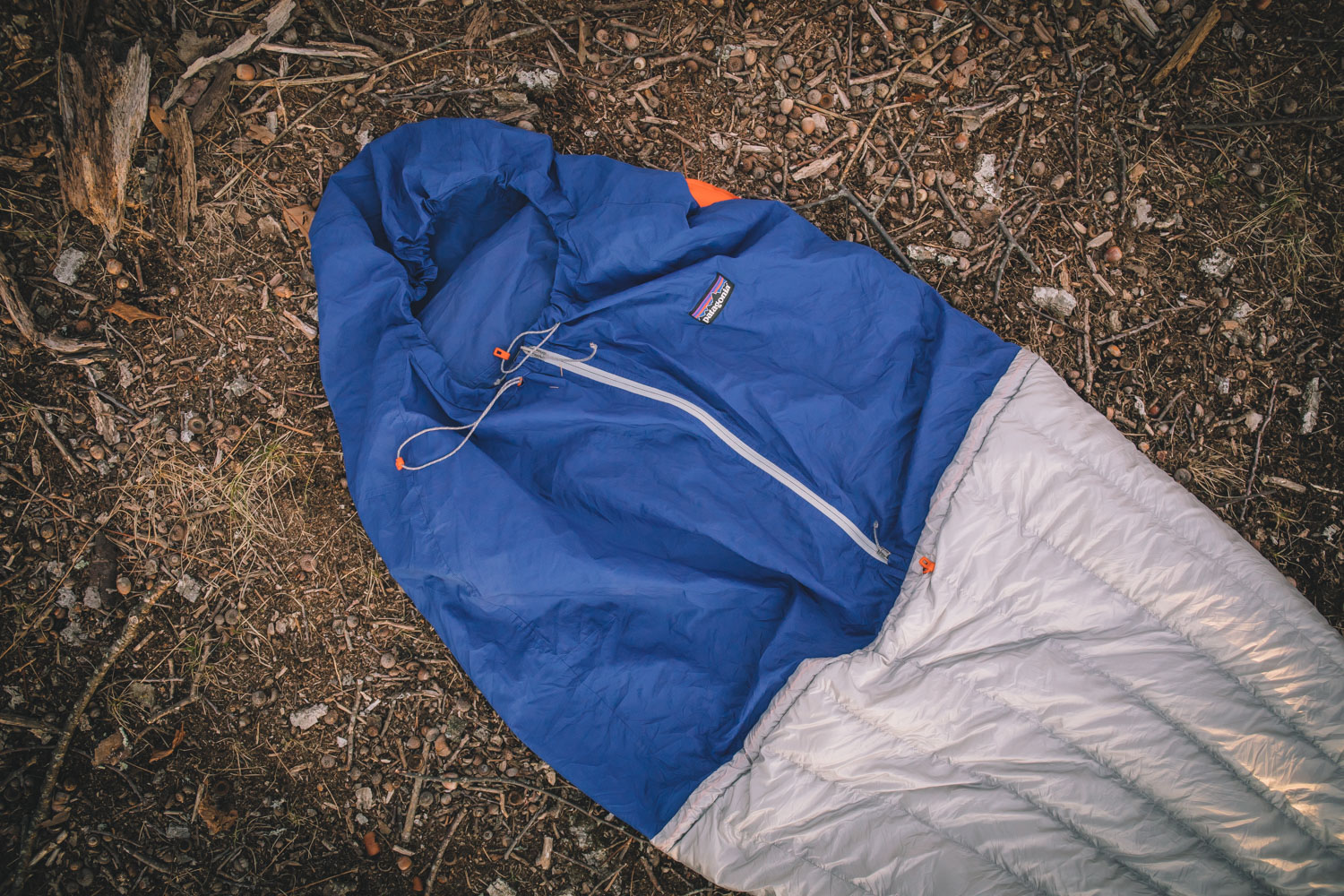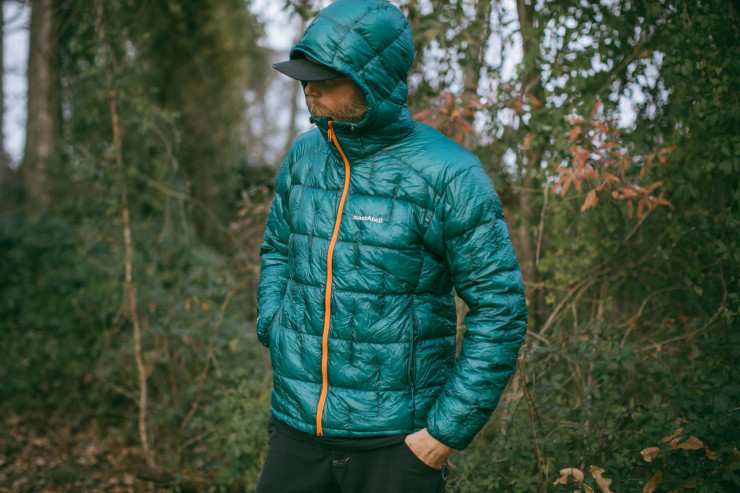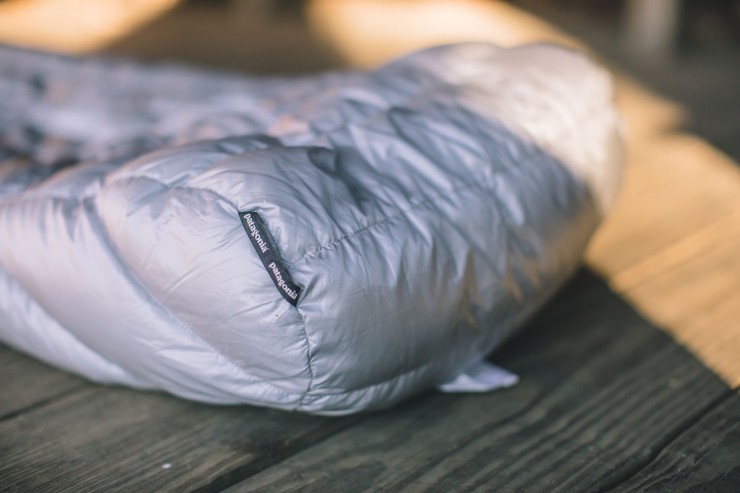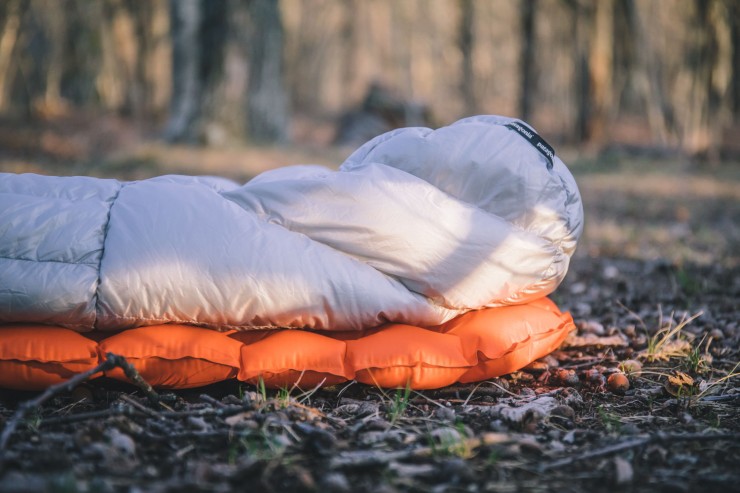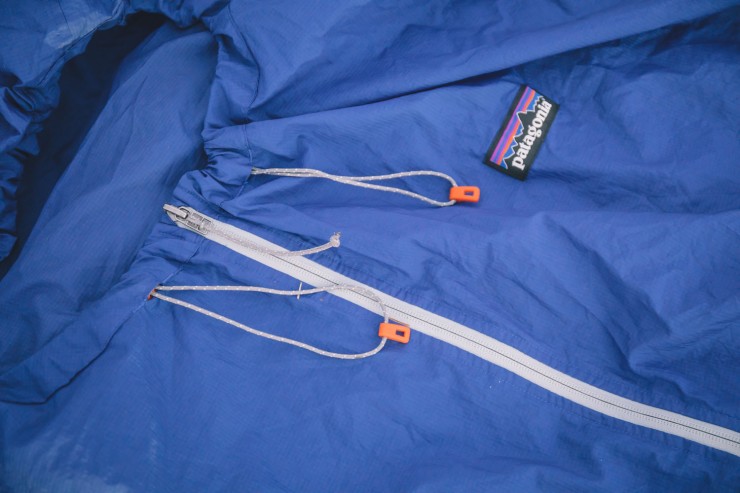Patagonia Hybrid Sleeping Bag Review: Run what you brung.
Paired with the proper jacket or parka, the Patagonia Hybrid Sleeping Bag becomes an ultralight backcountry sleep system that shaves space and weight by only having insulation in the lower half… from the waist down to the “elephant’s foot”. See how it performed on the trail…
“If at some point during the trip you’re not wearing every article of clothing you packed… you brought too much.” It may have been Joe Cruz who told me that. Or perhaps it’s an old minimalist backpacker mantra. Either way, it stuck with me and now I’d consider myself an alumni of that school of thought. Of course, my personal mantra is slightly altered — pack as little as possible and still feel like you are riding a mountain bike — but the truths are the same. Carefully considering every piece of gear in the kit is part of the process. So when Patagonia introduced the Hybrid Sleeping Bag, a sleep system purposefully designed to integrate with another piece of gear that you already carry, the idea hit home. The designers at Patagonia figured that most alpinists pack a down parka when venturing out into the backcountry. So why not eighty-six the insulation in the upper portion of the sleeping bag and harness the warmth from that jacket for the upper half. Otherwise it would just get wadded up in the corner of the tent, right? This approach makes perfect sense for alpine climbers, bikepackers, thru-hikers, or anyone looking to minimize gear.
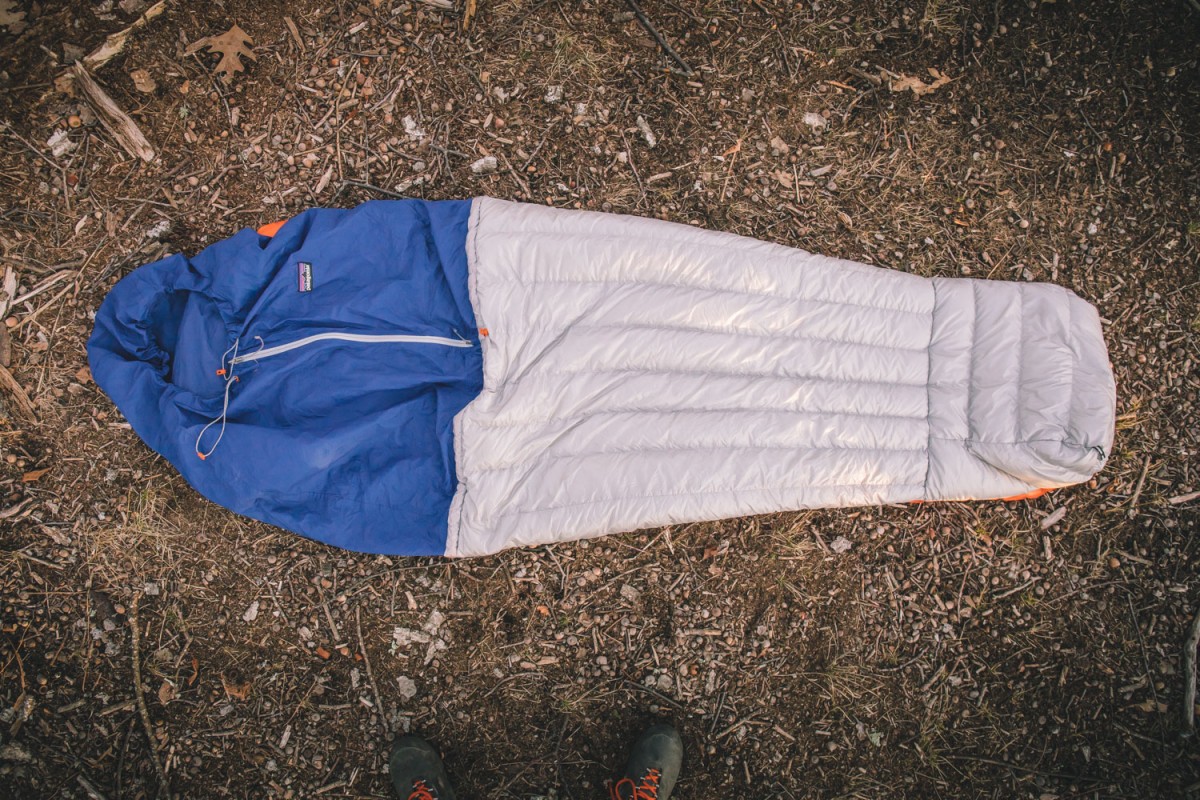

Let’s start with the motive behind the Patagonia Hybrid Sleeping Bag’s unique design… saving weight and minimizing packing space in a backpack or handlebar pack, depending on the user group. It’s definitely small. When stuffed into its own ultralight sack, it’s the size of a Classic 64oz Klean Kanteen… or maybe more like the 40oz model if you really cinch it down. I had a 45°sleeping bag that packed to a smaller size, but it was a summer season bag. The Hybrid is a mountain weather bag meant to withstand colder temperature dips. The regular length Hybrid Sleeping Bag weighs in at 490 grams (17.3oz). A comparable high-end 20°F sleeping bag will likely weigh 170-227 grams (6-8oz) more than that, pack slightly larger, and do a couple hundred dollars worth of additional damage to your wallet. It’s worth noting that there are upmarket 20 or 30° quilts that are comparable in packed size and weight to the Hybrid. But again, they are likely to be pretty expensive. And unlike a sleeping bag, with a quilt you rely on the R-value of the sleeping pad too. Plus you’ll still be carrying that down jacket.
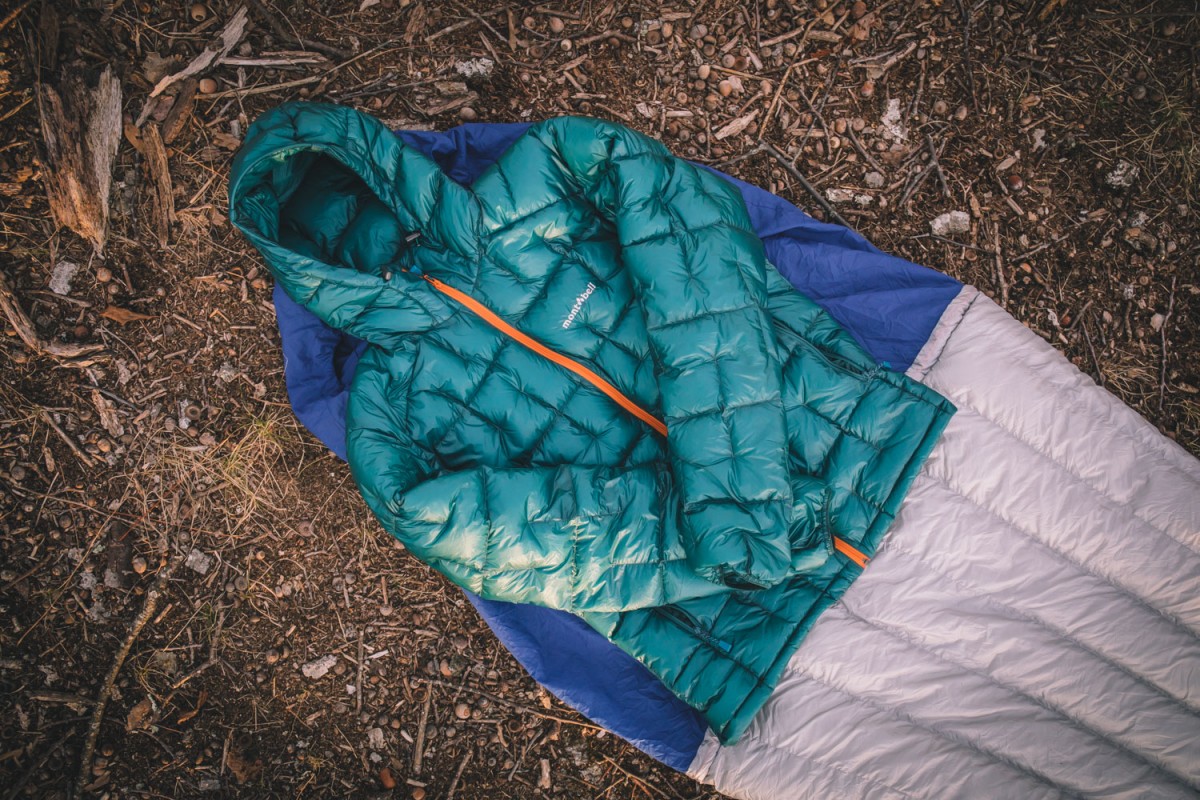
While Patagonia built the Hybrid Sleeping Bag for use with their own Grade VII Down Parka — which weighs a whopping 674g — I decided to go much lighter with my favorite jacket, the Montbell Plasma 1000 Alpine Down Parka. It packs tiny and weighs only 237 grams. Neither the Plasma nor the Hybrid are meant for arctic exploits. Back in February I used this setup on an overnighter where temperatures plummeted to somewhere around 5°F. That particular evening I wore a wool base layer, the Montbell Parka, wool socks, and Giro Wool gloves. I still froze; both my feet and my torso. I’ve also used the Hybrid/Plasma combo on more tame nights where temps hovered around 20°F, which is about where I pinned the temperature rating of this bag.
While it may not be warm enough for single digit temps, the Hybrid Sleeping Bag (from the waist down, of course) is pretty warm. Patagonia doesn’t specify a temperature rating for the bag; probably because this would depend on the parka used along with it. I would assign it a rating around 22°F (-6°C) for my own personal tolerance; that’s a judgment based on my feet getting cold at temperatures under 20. Of course this could be extended using a liner. The warmest temperatures this bag has seen were somewhere around 60°F, which was quite comfortable and not too hot. Patagonia integrated a nice waist drawcord that helps control the heat in the bottom of the bag. When tightened, it helps hold in the heat and when left loose, it allows it to breathe. That said, the fill is a little more fluffy at the foot of the bag. Patagonia describes this as a “custom foot box pattern [that] eliminates dead space and bulk, maximizes warmth and affords ample room for movement”. The foot box resembles, and is sometimes called, an Elephant’s Foot. In temperatures above 70°F, I would expect the Elephant’s Foot to get a get a bit steamy. This is definitely a bag designed for mountain weather.
Patagonia uses 850 fill-power ‘Traceable Down’ to insulate the lower half of the Hybrid. Traceable Down is a standard Patagonia stresses with all of their down products, and it should make you feel pretty good about what you are cozying up to out in the forest. That term loosely means that there were no animals harmed or abused in the making of the sleeping bag — it’s stuffed with goose down that can be traced from the parent ‘farm to apparel’ factory to help ensure the birds that supply it are not force-fed or live-plucked, two real problems in the down industry. Granted 850 fill count down is not the highest or lightest you can go in the fill-power spectrum, it keeps the bag’s price tag at a reasonable $300.

The upper shell of the bag is made from Pertex Quantum with a DWR finish, the same fabric used in several UL rain jackets on the market. In addition, the insulation liner material also has a DWR finish making the Hybrid resistant to moisture and good for sleeping out of doors or in situations where condensation might be an issue. The upper shell also features a zipper and a double-sided drawcord with sewn in release buttons. My one complaint about the bag stems from the hood drawcords, they are a little fussy to work with, especially when wearing gloves.
The Patagonia Hybrid Sleeping Bag comes in three sizes, short, regular and long. I am 6′ even (183cm) and weigh about 170. The regular size fit me fine, although I may have considered a long in hindsight; a tad more room in the foot area might have been nice. And while the body of the bag isn’t as roomy as some sleeping bags, it shouldn’t be; it’s designed move with you rather than have you move around inside it. I toss and turn a bit when camping, typically flipping from side to side on several occasions throughout the night. I found the Hybrid bag to be OK and not too limiting. The top of the bag is on you, kind of like a jacket — more so when the waist cord is cinched down — and your feet stay in the same orientation within the “elephant’s foot”.
Pros
- Innovative design approach employs other gear that you’re already carrying.
- Patagonia’s use of traceable down can make you feel good about your purchase.
- The footbox is extra warm which is a sensitive cold spot for most people.
- DWR finish helps repel dew and mist if you are an outside sleeper.
- Packs relatively small and lightweight due to the lack of down in the upper portion of the bag.
Cons
- May be a bit warm for warmer non-mountain climates.
- Not as lightweight as other high-end quilts on the market.
- The hood drawcords are a little tricky to get just right.
- The minimal top zip and fully enclosed latter half can feel confining when compared to a quilt or 3/4 zip sleeping bag.

- Size tested Regular
- Weight 490 g (17.3 oz)
- Price $299
- Place of manufacture China
- Contact Patagonia.com
Wrap Up
The Patagonia Hybrid Sleeping bag is a very interesting product and a step in the right direction for minimalist packing. While the Hybrid is a bit quirky and it may not fit everyone’s needs, it’s refreshing to see a company try something completely different. I found the bag, especially on colder nights, to be generally comfortable and perform as intended. If you are looking for ways to maximize the uses for every piece of your kit, and minimize packing space, the Hybrid Sleeping Bag and a good alpine down parka make a great team. If the Hybrid is not your cup of tea and a standard mummy bag is more your speed, also check out Patagonia’s new line of sleeping bags, all made with Traceable Down and similar construction techniques to the Hybrid.
If anyone has experience using the Patagonia Hybrid Sleeping Bag outside in damp conditions, please leave a comment in regards to the DWR performance of the shell and liner.
Please keep the conversation civil, constructive, and inclusive, or your comment will be removed.






